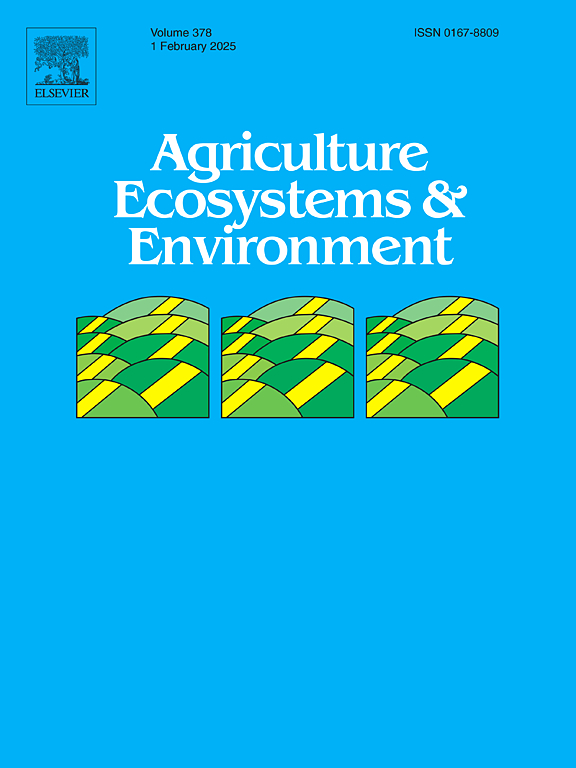Deep plowing enhanced soil nematode communities and soil quality in dryland wheat fields on the Loess Plateau of China
IF 6
1区 农林科学
Q1 AGRICULTURE, MULTIDISCIPLINARY
引用次数: 0
Abstract
Deep plowing and subsoiling are the primary methods for soil water retention in dryland farming areas of the Loess Plateau during the summer fallow period of winter wheat. Soil nematodes serve as biological indicators of the soil ecological health. However, we have limited understanding of the relationship between soil biological communities in the soil micro-food web of dryland tillage. This study investigated soil nematode and microbial communities,as well as the soil properties under deep plowing tillage (DT), subsoiling (SS), and no tillage (NT) in dryland wheat fields on the Loess Plateau, based on a 5-year experiment. The results indicated that nematodes were mainly distributed in the 0–20 cm soil layer. Plant parasitic nematodes (Pp) were dominant during the wheat growth period, while bacterivore nematodes (Ba) prevailed during the non-wheat growth period. With the lowest plant parasite index (PPI), highest maturity index (MI) and structure index (SI) of the nematode community, DT enhanced soil microecological stability. Additionally, DT demonstrated the highest overall soil quality, characterized by significantly higher soil moisture, available potassium contents, NH4+-N, and NO3--N levels, microbial abundance, and soil enzymatic activities. The highest soil organic carbon content and the most intricate interactions between nematodes and microbial communities were noted under SS, along with the highest level of cooperation among various soil biota. Furthermore, bacteria, fungi, and soil properties positively affected soil nematodes, with the soil properties exerting the most significant impact (P < 0.001), particularly through soil aggregate stability, moisture, and microbial biomass having significant effects. Soil moisture was positively correlated with the most dominant nematode and bacterial genera. In summary, DT significantly enhanced the structures of soil nematodes and microbial communities and stabilized the soil micro-food web by improving soil moisture and quality. It serves as an effective tillage practice for wheat fields in the dry-farming areas of the Loess Plateau.
求助全文
约1分钟内获得全文
求助全文
来源期刊

Agriculture, Ecosystems & Environment
环境科学-环境科学
CiteScore
11.70
自引率
9.10%
发文量
392
审稿时长
26 days
期刊介绍:
Agriculture, Ecosystems and Environment publishes scientific articles dealing with the interface between agroecosystems and the natural environment, specifically how agriculture influences the environment and how changes in that environment impact agroecosystems. Preference is given to papers from experimental and observational research at the field, system or landscape level, from studies that enhance our understanding of processes using data-based biophysical modelling, and papers that bridge scientific disciplines and integrate knowledge. All papers should be placed in an international or wide comparative context.
 求助内容:
求助内容: 应助结果提醒方式:
应助结果提醒方式:


